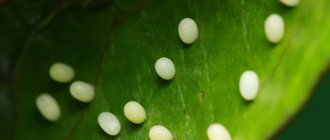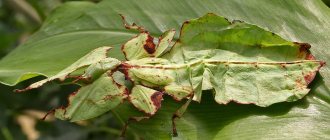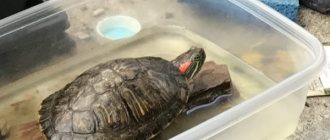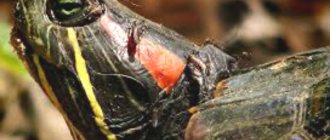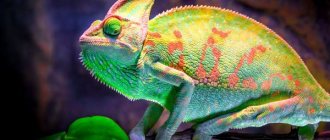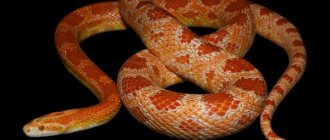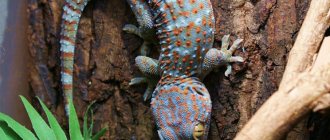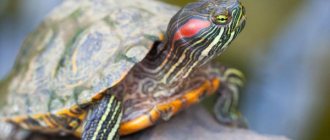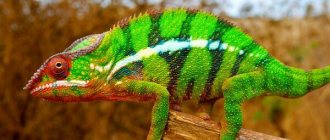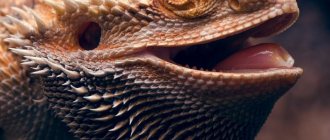A butterfly is a well-known flying insect from the Lepidoptera family, which also includes moths. A distinctive feature of these creatures is the presence of chitinous scales on their thin wings, which are especially noticeable if you take the butterfly by the wings.
Insects belonging to the order Lepidoptera are among the most numerous on the planet. Species diversity includes more than 150 thousand species, distinguishable by size and especially by the color and shape of the wings. But what do butterflies eat, what is the basis of their diet?
What do butterflies eat?
To the question “What do butterflies eat?” one could answer briefly - nectar. They love the nectar produced by various beautiful flowers. Moreover, unlike many insects, butterflies distinguish the color red, which allows them to better navigate in search of food.
And in today’s article we will talk in detail about what butterflies eat at home and how they survive in the wild.
Diet in the wild
We all know that every butterfly was originally a caterpillar. So, in the caterpillar stage, it eats a lot, providing itself with food even after it becomes a butterfly. But the protein reserves that the caterpillar deposits in its body are not enough. When they are used up, she has to look for food to maintain vitality.
It would be wrong to say that butterflies eat, since their feeding method is “sucking”. They don't have a mouth as such. Instead, there is a “folding” proboscis with which the insect sucks up food.
It is clear that it will not be possible to suck up anything rough with its proboscis, so the entire diet of a wild butterfly consists mainly of nectar and pollen.
Another favorite delicacy is rotten fruits (pears, apples). They cannot chew, but they can easily suck the juices out of decaying fruits. Moreover, they are rich in sugar.
Also, many may have noticed that they eat bird droppings and manure. The fact is that it contains many microelements that they need for normal existence. Therefore, they do not disdain such a “fragrant” delicacy.
They also love salt. But it is very difficult to get it in the wild. Therefore, many insects get it from human sweat in the summer. You can often see butterflies landing on sweaty people in parks. They do not cause any harm to humans, but simply suck sodium out of sweat.
Where did the name ladybug come from?
The ladybug received its scientific name due to its unusually bright color - the Latin word “coccineus” corresponds to the concept of “scarlet”. And the common nicknames given to the ladybug in many countries around the world speak of people’s respect and sympathy for this insect. For example, in Germany and Switzerland it is known as the “Virgin Mary’s bug” (Marienkaefer), in Slovenia and the Czech Republic the ladybug is called “Sun” (Slunecko), and many Latin Americans know it as the “St. Anthony’s bug” (Vaquita de San Antonio).
The origin of the Russian name for ladybug is not exactly known. Some researchers are inclined to believe that this is due to the ability of the insect, in case of danger, to secrete “milk” - a special poisonous liquid (hemolymph) that repels predators. And “God’s” means meek, harmless. Others believe that these insects received the nickname “ladybugs” because they destroy aphids and help preserve crops.
How to feed your pet
Especially if you caught the butterfly in the wild and did not raise it in your terrarium, then you may have problems feeding the insect. It is very difficult for him to explain that there is food on the plate, so sometimes you have to help:
- If the butterfly is excited, wait until it calms down and folds its wings. Now we carefully take them and bring it to the container with nectar. If she is hungry, she will immediately begin to suck the liquid. If not, then wait and repeat the above procedure.
- Problems can arise when she is scared. In this case, the insect will not eat even if it is hungry. Therefore, we need to help her. Bring the insect to the container with nectar and a toothpick, carefully, try to unfold its proboscis and dip it into the nectar. It should start sucking on it immediately.
- Some species have taste buds on their paws. If your insect is one of these species, you can lightly dip its paws in nectar so that it understands that the food is edible.
Content nuances
We’ve figured out what butterflies eat, now let’s talk about how to keep this exotic insect at home.
First, she needs a home. It should not fly freely around the apartment, so you will have to equip or purchase a special insectarium.
Secondly, it is necessary to maintain a suitable microclimate. They love warmth and at any sign of cold they immediately hibernate. The optimal temperature for their existence is 23-28 degrees Celsius.
Thirdly, the level of humidity is no less important. In dry air the butterfly will die very quickly. To increase humidity, spray the apartment or insectarium with water from a spray bottle. Don't be afraid if droplets get on an insect. It's even useful. This procedure should be carried out 1-2 times a day.
Fourthly, they pay special attention to their sleeping place. If you don’t have an insectarium and they just live in an apartment, then most likely the insects will spend the night on curtains or on indoor plants. If pets live in an insectarium, then you will need to build a resting place for them.
Twigs are perfect. They need to be laid out so that the butterfly can sit down comfortably (they sleep while sitting).
What happens in winter?
Most species simply hibernate. They find a secluded corner (often under the roofs of houses, in barns) and sleep until spring. In the spring they wake up and continue their life cycle. Some species die, postponing offspring for the future. There are species that fly to warmer regions, like birds.
Caring for these insects is not difficult. In fact, they are not whimsical when it comes to food. It is enough to build or purchase an insectarium, periodically spray it with water from a spray bottle and prepare nectar once a day.
Source
Where do ladybugs live?
The distribution area of ladybugs includes all continents of the globe and all climatic zones, with the exception of Antarctica and areas covered with eternal snow. These insects can be found in all countries of Northern, Western and Eastern Europe: Sweden and Norway, Denmark and Iceland, Great Britain and France, the Netherlands and Germany, Italy and Poland, in all countries of the former Soviet Union. Insects fly over the expanses of India and Pakistan, Korea and Mongolia, China and Japan, as well as North and South America. They live in Cambodia and Myanmar, Laos and Vietnam, Singapore and Indonesia.
Some types of ladybugs prefer to inhabit only those plants on which a colony of aphids has developed, others prefer sedge and reeds growing along ponds and rivers as a home, while others need field grasses to survive.
How to feed and care for butterflies
Butterflies feed on sugar syrup, juicy citrus fruits or crushed bananas. You need to feed the butterfly once a day. The easiest way to feed a butterfly is to prepare sugar syrup for it or buy special food for butterflies in our store.
- Mix one or two teaspoons in a glass of warm water and pour a small amount onto any surface or saucer.
- Take the butterfly as shown in the picture and place its front paws on a treat.
- If the butterfly does not straighten its proboscis, take a toothpick and straighten it yourself so that it touches the food. If the proboscis remains in the food, the butterfly is eating; if the proboscis is curled up, then the butterfly is not hungry and can be fed later.
General information
- You can only pick up the butterfly by the body at the base of the wings;
- The butterfly is active at temperatures above 20 degrees
- You can release a butterfly to fly around the apartment. Butterflies love to sit on curtains;
- Butterflies, like many insects, fly towards the light. If a butterfly flies into the chandelier, simply turn off the light and take out the butterfly;
- It is more convenient to feed the butterfly in a cooled room;
- Butterflies live from a couple of days to a couple of weeks.
On our farm you can always buy live butterflies, fireworks from live butterflies, or buy a butterfly farm and raise butterflies yourself
Source
Life cycle of coccinellid
These insects are among the first to awaken in the spring. As soon as the air temperature rises to +120C, you can already see flying ladybugs. At this time, despite the fact that these beetles prefer to lead a solitary lifestyle, they gather in groups as the mating season begins. All ladybug species undergo a four-stage life cycle from egg to adult.
The insect's lifespan is 10-12 months, but some coccinellids can live up to 2 years.
Reproduction
After mating, the female ladybug lays eggs ranging from 5 to 30 eggs. on the back of the leaves. After 2-10 days, larvae emerge from them. Moreover, scientists have established that the female lays eggs that are infertile. This is necessary so that the offspring that are born can feed on them.
An insect in the larval stage has an increased appetite. In 3 weeks it grows significantly and sheds. After this, the larva stops eating and attaches itself to a leaf or shoot and then pupates. Over the next 15 days, the ladybug's body undergoes a significant transformation. With the help of special glistoblast cells, the insect turns into an adult.
Immediately after birth, the imago has a soft exoskeleton, which makes it vulnerable to predators. During this period, the color of the insect is pale yellow. And only after a few hours the cuticle hardens, and the ladybug acquires a bright color. The process of turning an egg into an adult sexually mature individual takes about 7 weeks.
Ladybug larvae are small predators
Ladybug larvae remain living on the plant. They have an elongated fusiform body, a large rounded quadrangular head and three pairs of long thoracic legs. The color of the larvae is dark green or black, but a yellow or red pattern is clearly visible on it, depending on the type of insect. They have warty growths on their backs.
Ladybug larvae, like adults, prefer to feed on aphids. They are capable of destroying about 1 thousand pests before pupation. Moreover, insects eat not only aphid imagoes, but also eggs, as well as its larvae.
Water with sugar for butterflies
What to feed live butterflies, what do different types of butterflies eat?
The lifespan of a butterfly is unpredictable, like any other living creature. But using averaged statistical observations, it is possible to indicate the approximate dates of a particular species of butterfly. Butterflies need to be fed at least once a day, and preferably 2 times - in the morning and evening. At night we put the butterfly in a dark box.
With proper care and feeding, the longest-living and most unpretentious species of all are the Owl butterfly (lives up to a month) and the Morpho butterfly (lives about 3 weeks).
Interesting facts about ladybugs
- Since ancient times, people have idolized and worshiped the ladybug. The ancient Slavs considered her a messenger of the Sun goddess. With its help they predicted the upcoming weather. A bug flying away from the palm promised a good clear day, and an insect wanting to stay on the hand foreshadowed bad weather.
- In some world cultures, it is forbidden to harm, let alone kill, these insects, so as not to cause trouble.
- Since ancient times, people in Western countries have believed that the ladybug is a symbol of good luck. The image of a red bug on clothes or various jewelry was considered a talisman.
- Many signs associated with this insect have survived to this day. They always portend only good events. A ladybug that has settled on a hand, clothing, or hair cannot be driven away so as not to frighten away fortune. A ladybug flying into a house brings peace, harmony, tranquility, and for childless families, the appearance of a child soon. By counting the number of spots on the elytra of a ladybug, you can find out how many successful months there will be next year.
- For scientists, the annual flight of ladybugs for the winter still remains a mystery. Bugs always return to places once chosen. This phenomenon cannot be explained by the insect’s good memory, since due to their short lifespan, new generations return to their old wintering grounds.
- A hungry ladybug larva, keen on searching for food, can cover a “huge” distance for insects – 12 meters.
- The larvae of these cute bugs can be cannibals, eating their relatives who have not yet hatched from the eggs.
Did you like the article? Share with your friends:
Butterflies offered today for keeping at home can be divided into 3 types:
1) Butterflies that feed on their own. Basically, all American species (Owl or Caligo butterfly, Morpho butterfly, Cyproeta Stelenes butterfly).
These are butterflies of closed spaces, they live in the forest and prefer fermenting fruits. At home, it is enough for them to offer them chopped (or better yet, overripe, as in nature) fruits, and they themselves unfurl their proboscis and begin to drink. In nature, fallen fruits of various fruits, lying on the ground, gradually become soft and fragrant; butterflies fly to such fruits with great desire; it is easier for them to pierce the soft parts of these overripe fermented fruits with their proboscis. Oranges, grapefruits, bananas (overripe!), mangoes, kiwis, and passion fruits are suitable for feeding at home. We feed at least once a day, preferably 2 times (morning and evening).
2) Butterflies are whimsical, they need to make sweet water and unfold their proboscis. These are, for example: Swallowtails, birdwing Troides, Graphium, Sylvia, Demolay. These are butterflies of open spaces - they fly in meadows, forest edges, etc. They prefer flowers and nectar. You can make sweet water based on regular sugar (ideally fructose) or honey (natural). It is better to take boiled water (room temperature). In 1 cup, stir about 2-3 teaspoons of sugar or honey, stir until completely dissolved. Then pour the resulting nectar into a saucer. We carefully take the butterfly at the base of the wings perpendicular to its wings; it is most convenient to do this between the middle and index fingers. Having fixed the butterfly in this way, we bring it to the saucer with nectar and unfold the proboscis with a needle or a regular toothpick. The proboscis is located on the head under its antennae (see photo below). As soon as the tip of its proboscis hits the nectar, the butterfly begins to drink (If the butterfly is hungry). Now you can let go of the wings and not disturb the butterfly until it drinks. We feed at least once a day, preferably 2 times (morning and evening).
Which types to choose?
Keeping an insectarium at home involves breeding exotic species of butterflies. Especially if your goal is potential earnings.
The following types are suitable:
- Sailboat Polit - has an attractive contrasting color, length 8-10 cm.
- “Moon butterfly” - wings of a characteristic dark blue color, length is 8-10 cm.
- Graphium Agamemnon is a very active species, well suited for use at festive events.
- Kotzebue's sailboat is black with bright red splashes. Length – up to 10 cm.
- Danaid Chrysippus is a yellow-orange butterfly, 6-8 cm long.
- “Orange butterfly” - has an orange-white color, length is up to 10 cm.
- Caligo Atreus is brown or black with bright splashes of yellow and blue. The length ranges from 14 to 18 cm.
- Peacock-eye Atlas - different color options are possible: yellow, red, brown, etc. It can reach 26 cm in length.
